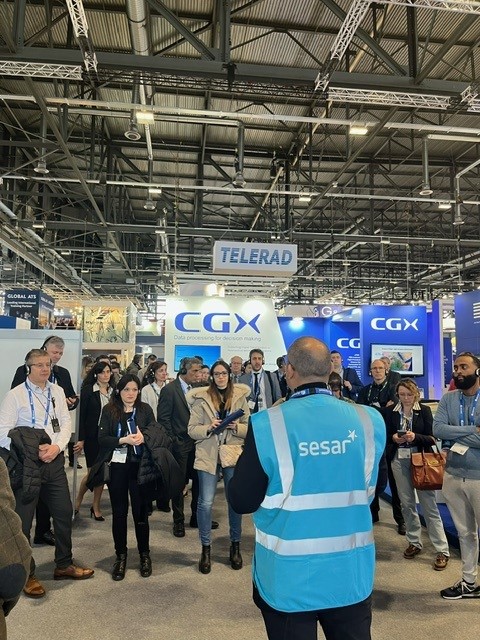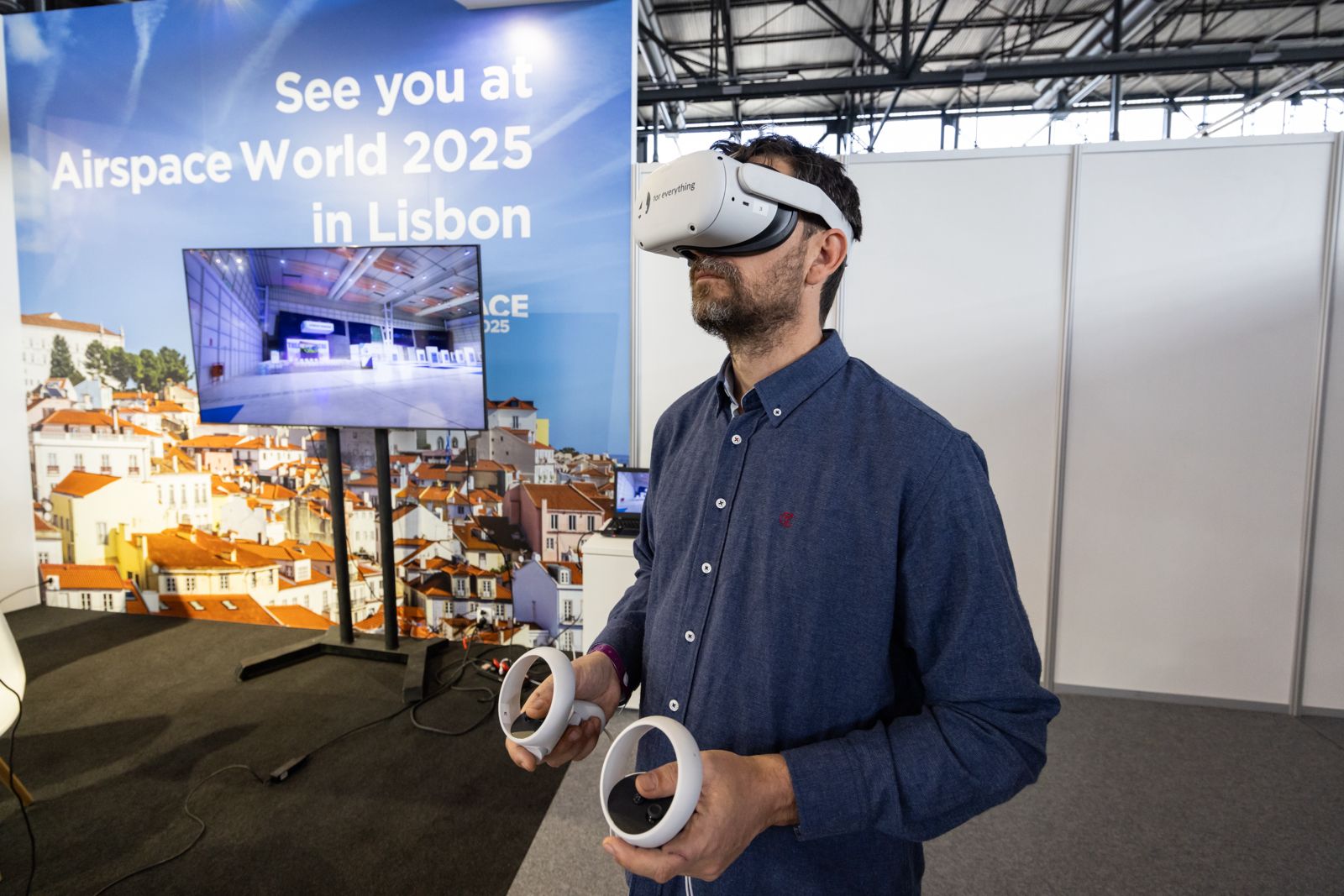A SESAR walking tour on virtualisation took in developments on display at the DLR, Frequentis and Indra stands.

SESAR’s Adriano Acanfora – the host of the tour – set the scene by explaining that the ultimate goal is a digital European sky that is efficient, resilient and sustainable. An important step on this path is the creation of virtual control centres that decouple the technology from the air traffic controller (ATCO).
At the Indra stand, it was explained the Virtual Centre with Triangle Architecture and Cyber Resilience (VITACTY) project and its involvement in iSNAP, which is the name for the technological evolution of the iTEC SkyNex platform.
VITACY will separate and provide data related to specific functionalities, such as arrival management (AMAN), time-based separation (TBS) and conflict detection. Validation tests in AMAN and TBS are ongoing and anticipated benefits include cost savings through the greater rationalisation of services. VITACY will also open the door for competition in data provision.
iSNAP, meanwhile, will advance iTEC communications to a more robust model, updating the ATM system supervision and data recording functions. The calculated trajectory of each flight plan will also be improved thanks to information received directly from the aircraft.
At Frequentis, it was explained that moving the technology into a data centre away from the controller has enormous advantages for resilience. There could be a second or third operational centre, for example, and even a second data centre. Aside from strengthening contingency plans this enables updates to be easily undertaken. The theory is that, ultimately, control of an airspace sector can be performed from anywhere in Europe, realising the digital sky dream.
The final element in this idea was described at the DLR stand. The Increased Flexibility of ATCO Validations (IFAV3) project will fill an important gap in the virtualisation concept. As it stands, ATCOs are endorsed on a specific sector following months of on-the-job training, which is expensive in terms of time and money and limits operational agility.
The idea is that through support tools, procedural changes, competency-based training, smart sector grouping and automation, ATCOs can be endorsed for multiple sectors. For example, tools might include a heat map that predicts future traffic density while procedural changes will move towards standardisation. User cases will also involve remote towers.
ATCOs that can move across sectors will complement the idea of virtual centres. It will make better use of existing capacity, improve resilience, enhance rostering possibilities and lower training costs.



